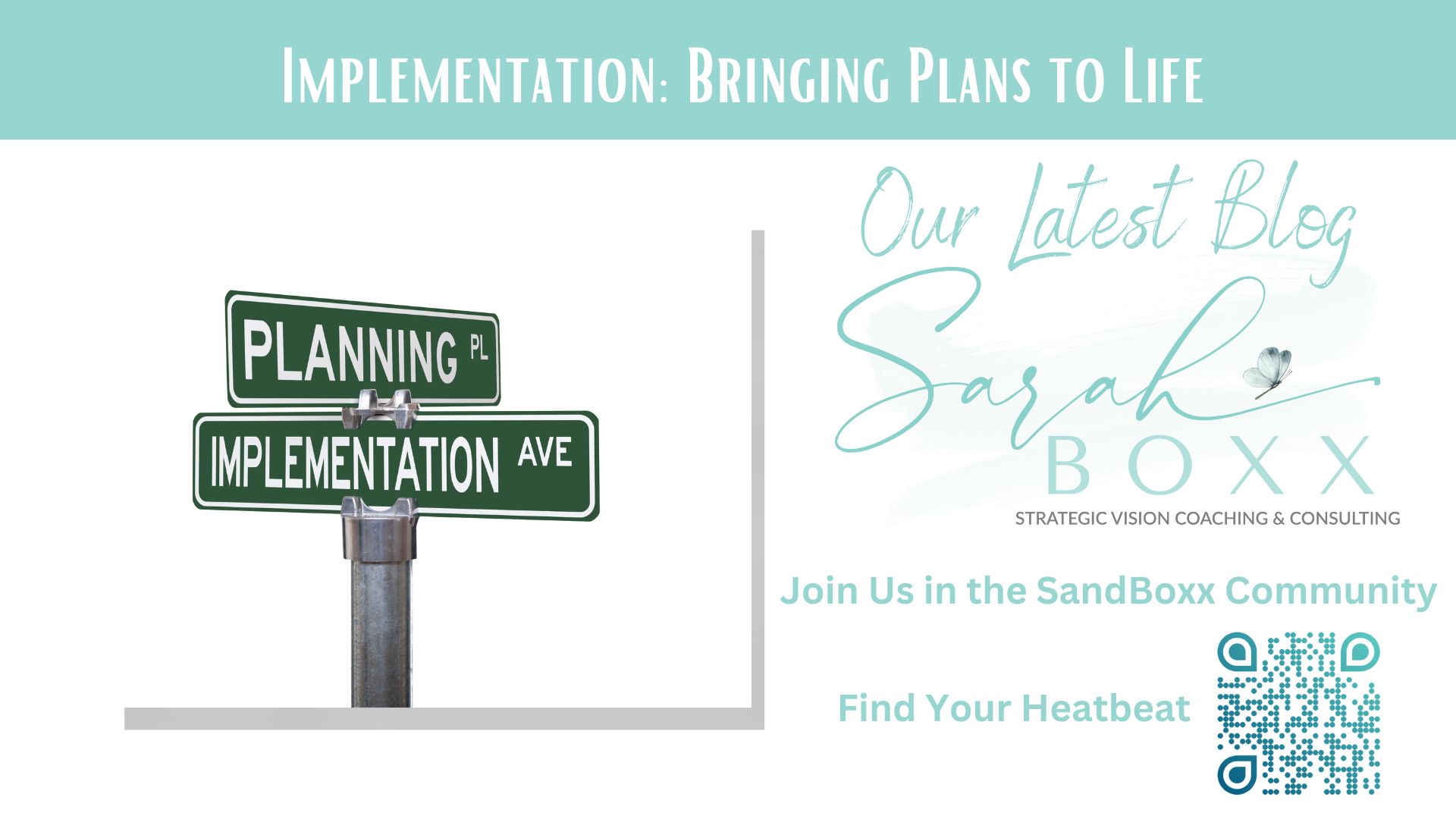Last week, we delved into the vital role of strategic planning and how it lays the groundwork for achieving your nonprofit’s goals. This week, we transition from planning to action, focusing on practical implementation strategies that turn your meticulously crafted plans into tangible results.
Practical Implementation: Turning Plans into Action
Strategies for Successful Implementation
Effective implementation is where strategy meets reality. The success of this phase or phase in program, project, or organizational planning depends heavily on practical steps rather than pie-in-the-sky and unrealistic approaches that fail to consider priorities, capacity, and buy-in.
“Strategy without process is little more than a wish list.” – Robert Filek
Over the past 30 years in the nonprofit arena (and a dozen more in business before then), I’ve learned the power of a coherent plan with implementation considered at the front end. Today’s post delves into:
- Effective Execution Techniques: Practical steps for converting strategic plans into straightforward, actionable tasks with well-defined roles and timelines.
- Overcoming Implementation Hurdles: Strategies for addressing common challenges such as resistance to change and resource underestimation.
- Strengthening Communication and Team Dynamics: Implementing a successful strategy requires maintaining clear communication and building strong team cohesion.
Let’s look at each in turn.
Effective Execution Techniques: It’s essential to break down each strategic goal into specific, actionable tasks. Assign clear roles and responsibilities and establish realistic deadlines to keep everyone on track. Utilizing project management tools can help monitor progress and maintain momentum. For example, when implementing a new donor management system, setting precise timelines for data migration, organizing staff training sessions, and planning a phased rollout is crucial to ensure a smooth transition.
Kiva is an excellent example of an effective execution technique in the nonprofit sector. Kiva specializes in micro financing and employs a well-structured approach to managing and executing its lending projects worldwide. By utilizing a robust online platform, Kiva coordinates the efforts of volunteers and local partners to process loans, monitor repayments, and maintain transparency with lenders. This systematic approach ensures that small business owners and entrepreneurs in over 80 countries receive the financial support they need promptly and efficiently.
Overcoming Implementation Hurdles: Common challenges during implementation include resistance to change, underestimating the resources needed, and a lack of flexibility. To effectively navigate these issues, maintain open lines of communication with your team, offer necessary training, and be ready to adapt your strategy based on ongoing feedback and changing conditions. If resistance is encountered, for instance, with new software, additional support sessions can help, and highlighting the benefits for individual team members can increase buy-in.
Doctors Without Borders (Médecins Sans Frontières) often face resistance due to the complex nature of working in conflict zones. They overcome these challenges by continuously training their staff to adapt to rapidly changing conditions and maintaining open communication lines among all levels of the organization. This adaptability allows them to deliver medical aid in some challenging environments.
Strengthening Communication and Team Dynamics: Clear communication and strong team dynamics are vital for successful implementation. Ensure all team members understand the changes and their roles in achieving broader organizational goals. Regular updates and celebrating small wins can boost morale and enhance a sense of involvement and cohesion. Weekly meetings to discuss progress and address hurdles can keep the team motivated and aligned with the project goals.
Real-world example:
In a significant operation conducted by the Humane Society of the United States (HSUS), over 120 dogs and puppies were rescued from a large-scale suspected dogfighting ring. This operation required meticulous planning and coordination and highlighted the critical role of effective communication and strong team dynamics in ensuring success. Let’s look closer at their communications and team dynamics.
Communication: For the HSUS, the operation’s success depended heavily on clear, concise, and timely communication across multiple teams. From the initial investigation stages to the execution of the rescue and subsequent care of the animals, every phase required coordinators to keep all parties informed. Updates were regularly shared between the on-ground rescue teams, veterinary staff, legal teams, and support staff back at headquarters. This ensured that every team member was aware of their responsibilities and the status of their tasks, which was crucial for the operation’s fluid execution.
Team Dynamics: The rescue operation’s complexity demanded a highly collaborative effort among specialized teams. The veterinary team needed to synchronize with the rescue officers to provide immediate care as animals were brought in. The legal team had to work closely with investigators to ensure all evidence was properly documented for future prosecutions. Furthermore, the logistics teams coordinated the transport and temporary housing of the rescued animals.
Each team’s ability to work cohesively under high-pressure conditions was fundamental. The HSUS fostered a culture of mutual respect and trust among different units, vital in high-stakes environments. Celebrating small victories, like the successful rescue of each animal or the completion of medical treatments, boosted morale and reinforced a collective commitment to the mission.
Through this operation, the Humane Society of the United States demonstrated how strategic communications and robust team dynamics are not just supplementary but central to executing complex, large-scale animal rescues effectively. These elements ensured that the organization could act swiftly and efficiently to save lives and work towards justice for the animals affected.
What About You? Here’s Your Call to Action
- Reflect on your current implementation processes and identify one area that could benefit from enhanced communication or better team engagement.
- Consider how adjustments in this area could lead to more effective implementation of your strategic plans.
- Identify and act on one improvement in your process that could foster better communication and team cohesion.
Then, please share your experiences and strategies in our communications portal and stay tuned for details on participating in the Transformation Room Experience.
Join us in turning strategy design and implementation into successful outcomes for your organization and the communities you serve.





